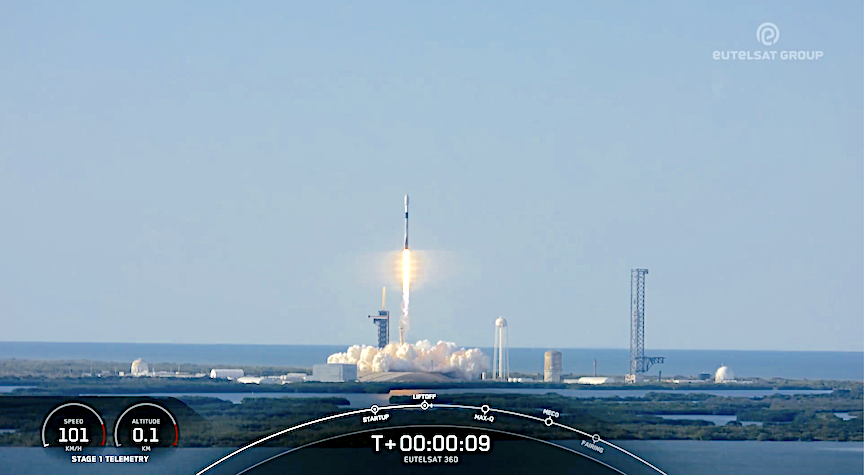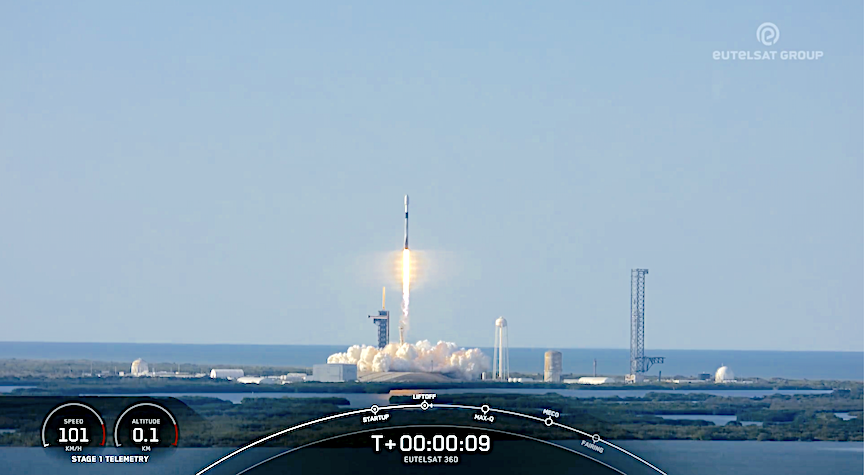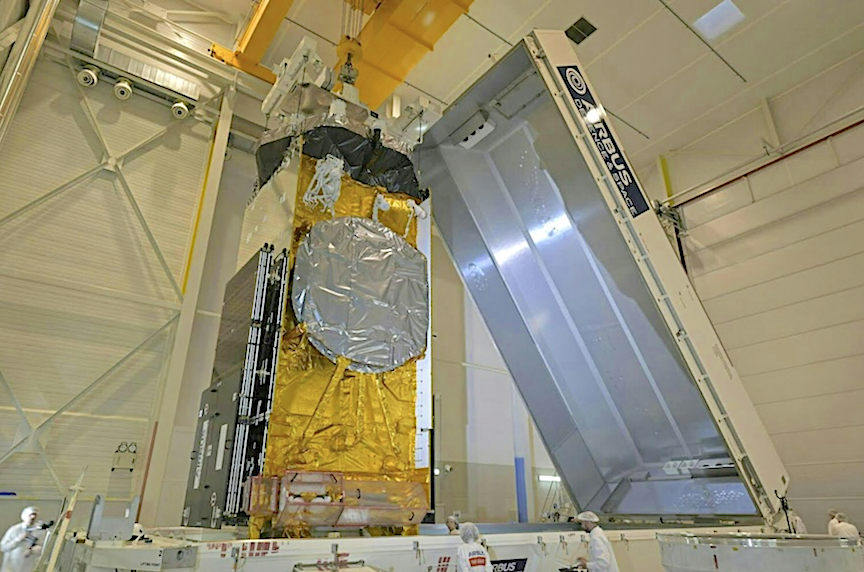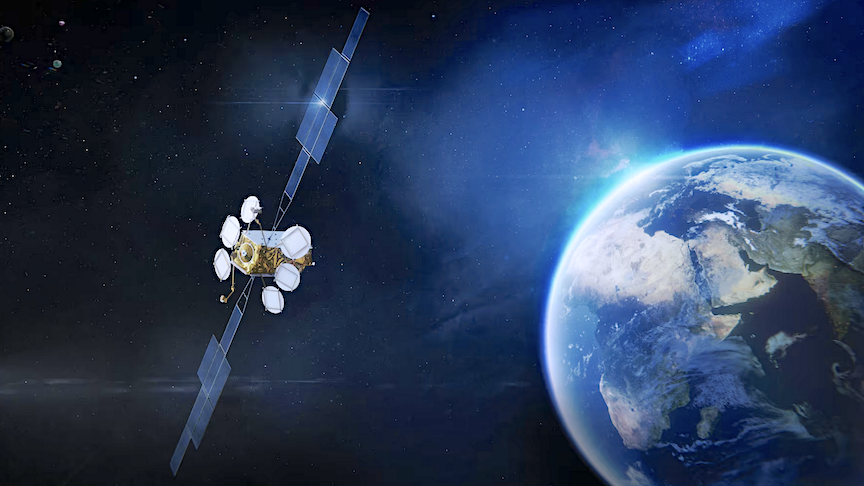
SpaceX launches EUTELSAT 36D providing more than 1100 broadcast channels in Africa, Russia and Europe (Image Credit: Sat News)

On Saturday, March 30 at 5:52 p.m. ET, Falcon 9 launched the EUTELSAT 36D mission to a geosynchronous transfer orbit from Launch Complex 39A (LC-39A) at the Kennedy Space Center in Florida. This is the first of potentially three SpaceX Falcon 9 launches on the same day. The other two are Starlink launches from California and Florida.
This was the 12th launch of the first stage booster supporting this mission, which previously launched CRS-26, OneWeb Launch 16, Intelsat IS-40e, O3b mPOWER, Ovzon 3, and six Starlink missions.

The payload for this mission is the Eutelsat 36D satellite, which measures 4m x 5m x 4m or the size of a small truck, according to the satellite’s manufacturer, Airbus. The geostationary telecommunications satellite arrived in Florida on Monday, March 11, onboard Airbus’ new BelugaXL plane, which is based on the A330-200 platform.

About 8.5 minutes after liftoff, B1076 landed on the SpaceX droneship ‘Just Read the Instructions’ in the Atlantic Ocean. This was the 76th landing on JRTI and the 289th booster landing to date.

In addition to “delivering over 1,100 TV channels to millions of homes” in the areas of Africa and Eurasia, the satellite “has also been selected by Airbus Defense and Space to carry its latest Ultra High Frequency (UHF) payload to support communications over the EMEA region,” Eutelsat said in a statement.

SpaceX is targeting Saturday, March 30 for Falcon 9’s launch of the EUTELSAT 36D mission to a geosynchronous transfer orbit from Launch Complex 39A (LC-39A) at the Kennedy Space Center in Florida. The three hour 58 minute launch window opens at 5:52 p.m. ET. If needed, a backup opportunity is available Sunday, March 31 with the same window.

Eutelsat 36D, built by Airbus, will be replacing Eutelsat 36B at 36° East where it will provide over 1100 broadcast channels and other connectivity across Africa, Russia, and Europe. The satellite features 70 Ku-band transponders to enable constant data flow to the ground. The satellite is expected to have an operational lifetime of 15 year








